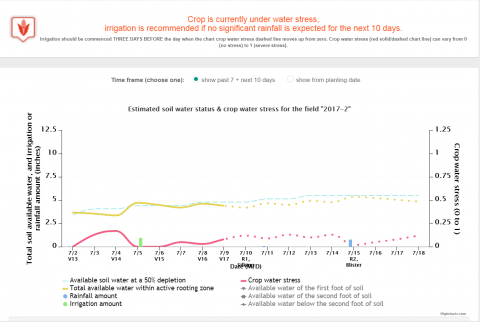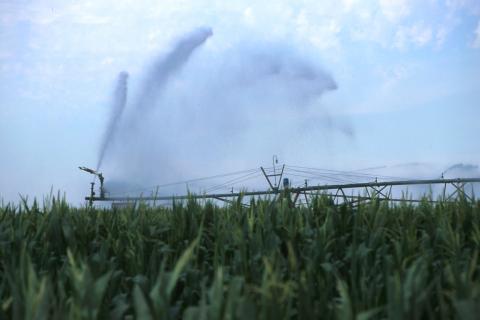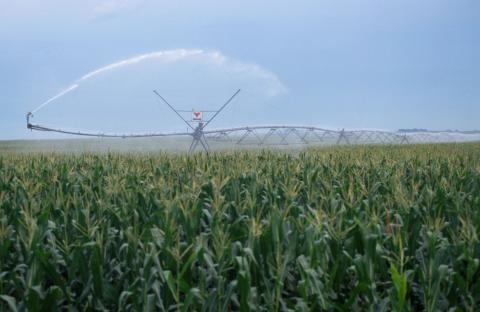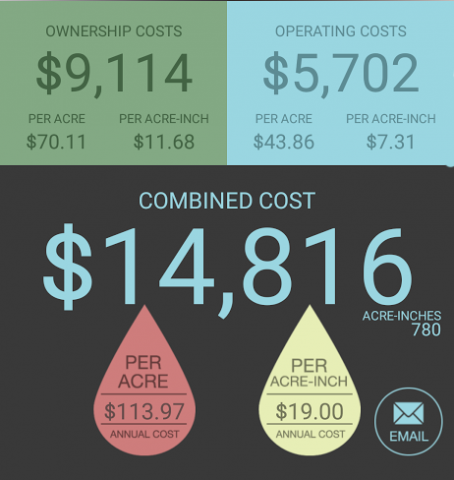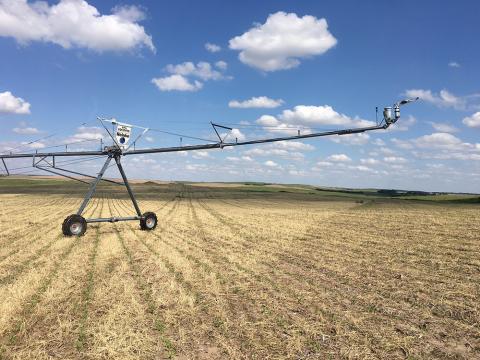Predicting Late-Season Irrigation Needs
August 3, 2017
Given the ups and downs in temperatures this season, crops are likely to mature over a longer period than usual this fall, making it even more important to predict your crop's water needs. The last few irrigations of the season require some of the most important water management decisions of the year.
CornSoyWater: Real-Time Aid for Corn and Soybean Irrigation Decisions
July 11, 2017
Use CornSoyWater and its app to monitor soil available water and crop water use and to identify fields where stress is likely occurring or will be occurring within the next three days. The tool is free, user friendly, and can help you monitor fields from a distance.
Tips for Irrigation Scheduling of Corn in the Late Vegetative Stage
June 30, 2017
Corn can sustain moderate water stress during the late vegetative period and may even benefit from it. That's not the case for the critical period from tassel to early grain fill. Using soil water data can help guide your irrigation decisions to maximize your water and energy use to produce crop yield.
Using SoyWater to Schedule Irrigation and Monitor Soybean Stages to Guide Decision-Making
June 26, 2017
SoyWater is an online tool that, based on the information you input, can provide timely, field-specific irrigation recommendations to increase irrigation efficiency.
How Much Irrigation is Needed on Corn in the Vegetative Growth Stage?
June 16, 2017
Strategies to time crop irrigation for maximum effectiveness suggest delaying irrigation until the critical reproductive growth stages will most benefit yield. This will also help reduce the potential for nitrate leaching.
Value of Using Sensors to Manage Irrigation and Tips for Proper Installation
June 8, 2017
With planting wrapping up across the state, now is an excellent time to install soil water sensors and ETgages. Timely installation is important to gaining the true benefits of sensors: reduced irrigation costs, less nutrient leaching, and reduced chances of overwatering leading to anaerobic soil conditions. Find information on water and economic savings and tips for installing soil moisture sensors and ETgages.
Is Your Irrigation System Ready for the Season?
June 7, 2017
Now is a good time to do a quick evaluation of the pumping plant, well, and center pivot to ensure they are in good working order before you have to rely on them during the heat of the summer. Here are a few quick checks you can do to help ensure a successful irrigation season.
North Platte River Basin Water Update
June 1, 2017
After good precipitation over the winter and spring, most of the reservoirs in the North Platte River basin in Wyoming are at or near capacity with more snowmelt/runoff still expected.

